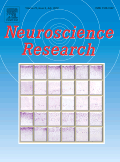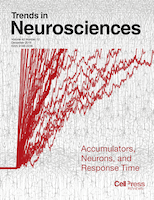
Brain Imaging and Behavior
Scope & Guideline
Advancing Insights: Bridging Imaging Techniques and Neuroscience
Introduction
Aims and Scopes
- Neuroimaging Techniques:
The journal emphasizes the use of diverse neuroimaging modalities, including fMRI, MRI, PET, and DTI, to investigate brain structure and function. - Cognition and Emotion:
A core focus is on understanding cognitive processes and emotional responses, particularly how they relate to neurological and psychiatric conditions. - Clinical Applications:
Research often explores clinical implications, investigating how neuroimaging findings can inform diagnosis, treatment, and understanding of various mental health disorders. - Multimodal Approaches:
The journal encourages studies that combine neuroimaging with behavioral assessments, genetic analyses, and other methodologies to provide a comprehensive view of brain-behavior relationships. - Population Diversity:
Research includes diverse populations, focusing on age, sex, and clinical conditions, to understand how these factors influence brain function and behavior.
Trending and Emerging
- Machine Learning and AI in Neuroimaging:
There is a growing trend towards integrating machine learning techniques for analyzing neuroimaging data, allowing for more sophisticated pattern recognition and predictive modeling. - Connectivity and Network Analysis:
Emerging studies focus on brain network connectivity, exploring how different brain regions communicate and how these networks relate to cognitive and emotional functions. - Impact of Lifestyle Factors:
Research increasingly examines how lifestyle factors such as diet, exercise, and sleep affect brain structure and function, linking behavioral health with neuroimaging outcomes. - Neuroinflammation and Mental Health:
There is a rising interest in the role of neuroinflammation in various psychiatric disorders, with studies exploring how inflammatory markers correlate with brain imaging findings. - Longitudinal Studies and Developmental Changes:
A trend towards longitudinal studies is evident, focusing on developmental changes in brain function and structure, particularly in pediatric and aging populations.
Declining or Waning
- Basic Neuroscience Studies:
There appears to be a waning focus on purely basic neuroscience studies that do not directly connect to behavioral implications, as the journal increasingly prioritizes research with clear clinical or applied relevance. - Older Neuroimaging Techniques:
Research employing older neuroimaging techniques or less sophisticated analyses may be declining, as the field moves towards more advanced methodologies such as machine learning and connectivity analyses. - Single Modality Studies:
There is a noticeable decrease in studies utilizing only one neuroimaging modality, as the trend is shifting towards multimodal approaches that integrate various imaging techniques for richer insights. - Generalized Population Studies:
Research that does not account for specific demographic variables or clinical characteristics appears to be less frequent, as the journal increasingly values studies that address population diversity and specificity.
Similar Journals

Biological Psychiatry
Illuminating the biological foundations of psychiatric conditions.Biological Psychiatry is a premier journal dedicated to advancing the understanding of the biological underpinnings of psychiatric disorders. Published by Elsevier Science Inc, this esteemed journal is recognized globally for its rigorous peer-reviewed research and contributes significantly to the field of biological psychiatry. With an impressive impact factor that places it in Q1 of its category and ranks 3rd out of 51 in Neuroscience Biological Psychiatry, it reflects the journal's strength in disseminating high-quality findings that push the boundaries of knowledge. Since its inception in 1969, the journal has undergone continuous evolution, aiming to integrate biological and clinical perspectives to optimize the understanding of mental health conditions. Although it does not offer open access, Biological Psychiatry serves as a critical resource for researchers, practitioners, and students, offering insights that influence both theoretical frameworks and practical applications in the realm of psychiatric science.

NeuroImage-Clinical
Transforming Clinical Practice through Cutting-edge ResearchNeuroImage-Clinical is a premier open access journal published by Elsevier Science Ltd, dedicated to advancing the field of clinical neuroimaging and its applications in a variety of neurological disorders. With an ISSN of 2213-1582, this journal has established itself as a leading source of innovative research since its inception in 2012, now continuing through 2024. Recognized for its high impact, it occupies the top quartile (Q1) in prestigious categories such as Cognitive Neuroscience, Neurology, and Radiology, affirming its relevance in clinical and research settings. Its Scopus rankings further exemplify its significant contribution to the disciplines of Radiology and Neurology, consistently placing it among the top tiers of journals in these fields. This journal not only provides critical insights for researchers and professionals but also serves as a valuable resource for students, fostering an understanding of the complexities in neuroimaging techniques and their implications for patient care. With open access options ensuring broad dissemination of knowledge, NeuroImage-Clinical plays a pivotal role in enhancing collaboration and innovation within the global neuroscience community.

NEUROSCIENCE RESEARCH
Exploring the Depths of Neuroscience InnovationNEUROSCIENCE RESEARCH, published by Elsevier Ireland Ltd, is a leading journal in the field of neuroscience, with a notable reputation for disseminating high-quality research that spans a variety of topics within the discipline. With an ISSN of 0168-0102 and an E-ISSN of 1872-8111, this journal serves as a vital platform for both established researchers and emerging voices in the field. Ranking in the Q2 quartile in both Medicine and Neuroscience categories, it has been recognized as a reliable source of innovative findings since its inception in 1984, with continuous publication through 2024. Although it does not currently offer Open Access options, the journal is indexed in Scopus, holding a significant position at Rank #48/113 in General Neuroscience, reflecting its contribution to advancing the understanding of neural mechanisms across various contexts. With its address anchored in Ireland, NEUROSCIENCE RESEARCH plays an essential role in bridging scientific inquiry and practical applications, making it an indispensable resource for researchers, professionals, and students dedicated to the burgeoning field of neuroscience.

Journal of Integrative Neuroscience
Exploring the Frontiers of Brain Research and DiscoveryWelcome to the Journal of Integrative Neuroscience, a prominent platform dedicated to advancing the field of neuroscience by fostering interdisciplinary research and innovation. Published by IMR PRESS, this open-access journal has been committed to disseminating high-quality research since its inception in 2002, with a vision to integrate various aspects of neuroscience, from theoretical foundations to applied methodologies, ultimately enhancing our understanding of the brain and nervous system. With an evolving presence in the academic community, the journal holds significant rankings, such as Q2 in Medicine and Q3 in Neuroscience for 2023, reflecting its growing impact and value to researchers and professionals alike. The journal is accessible globally, having adopted an open-access model in 2018, ensuring that vital neuroscience findings reach a broader audience without barriers. Positioned in Singapore and serving an international readership, the Journal of Integrative Neuroscience is your essential resource for the latest insights and discoveries in a rapidly evolving field.

NEUROSCIENCE AND BIOBEHAVIORAL REVIEWS
Empowering research that shapes the future of neuroscience.NEUROSCIENCE AND BIOBEHAVIORAL REVIEWS, published by PERGAMON-ELSEVIER SCIENCE LTD in the United Kingdom, serves as a leading interdisciplinary platform for the dissemination of pioneering research and reviews in the realms of Neuroscience, Behavioral Neuroscience, Cognitive Neuroscience, and Neuropsychology. With an impressive impact factor reflected in its Q1 ranking across multiple categories for 2023, the journal is recognized for its rigorous peer-reviewed content that influences the advancement of scientific knowledge in behavioral and cognitive research. An essential resource for researchers, professionals, and students alike, the journal emphasizes the exploration of complex neural mechanisms that underlie behavior and cognitive processes. Despite being a subscription-based publication, the journal's extensive archive from 1978 to 2024 fosters a wealth of knowledge designed to inspire and facilitate future advancements within the field.

Archives of Neuroscience
Unlocking the mysteries of the brain, one study at a time.Archives of Neuroscience is a multidisciplinary journal dedicated to advancing the field of neuroscience through the publication of original research articles, review papers, and case studies. Published by BRIEFLAND, this journal aims to bridge the gap between neuroscience research and clinical applications, fostering a deeper understanding of brain function, neurological disorders, and potential therapeutic approaches. With an ISSN of 2322-3944 and an E-ISSN of 2322-5769, Archives of Neuroscience serves as an essential platform for researchers, professionals, and students alike, encouraging open access to knowledge and insights that drive innovation in the field. Although coverage was discontinued in Scopus from 2016 to 2017, the journal continues to uphold rigorous standards of academic excellence, making it a valuable resource for the neuroscience community seeking to explore and disseminate new findings. The journal is committed to providing timely access to research tools and findings that are crucial for informed decision-making in both academic and clinical settings.

TRENDS IN NEUROSCIENCES
Navigating the Evolving Landscape of NeuroscienceTRENDS IN NEUROSCIENCES, published by CELL PRESS, is a leading journal in the field of neuroscience, offering cutting-edge insights and important developments in the rapidly evolving landscape of brain research. With an impressive Impact Factor and ranking in the top quartile (Q1) of the category for Neuroscience (miscellaneous), it is positioned as a vital resource for researchers and professionals seeking to stay abreast of the latest discoveries and trends from 1978 to the present. Specifically ranked #3 out of 113 in General Neuroscience by Scopus, this journal promotes the interdisciplinary exchange of ideas and knowledge, making it an essential platform for students and experienced scholars alike. Although it is not an Open Access journal, its value lies in its rigorous peer-review process and commitment to maintaining the highest standards of academic integrity. By continuing to explore the complexities of neural processes and behavior, TRENDS IN NEUROSCIENCES plays a crucial role in shaping the future of neuroscience research and education.

Annual Review of Neuroscience
Unveiling the Complexities of the Nervous SystemThe Annual Review of Neuroscience, published by Annual Reviews, is a premier journal that has been at the forefront of neuroscience research since its inception in 1978. With an ISSN of 0147-006X and E-ISSN 1545-4126, this leading academic journal boasts a remarkable impact factor, placing it in the prestigious Q1 category in Neuroscience (miscellaneous), with an impressive Scopus ranking of 4 out of 113 and a stellar 96th percentile in general neuroscience. Focused on publishing comprehensive and authoritative review articles, the Annual Review of Neuroscience aims to synthesize and critically evaluate the latest advances in the field, making it an indispensable resource for researchers, professionals, and students alike. While it does not offer open access, the insights and discoveries highlighted in its issues are crucial for those dedicated to understanding the complexities of the nervous system and driving forward innovative research. With a commitment to excellence and a forward-looking perspective, this journal continues to shape and influence the future of neuroscience.

Behavioral and Brain Functions
Unraveling the Connections Between Brain and BehaviorBehavioral and Brain Functions is a leading Open Access journal published by BMC, dedicated to advancing the field of behavioral neuroscience, cognitive neuroscience, and biological psychiatry since its inception in 2005. This esteemed journal, based in the United Kingdom, has established itself as a vital resource for researchers and professionals, boasting a remarkable influence demonstrated by its Q1 and Q2 rankings across multiple relevant categories. With its commitment to providing unrestricted access to high-quality research, the journal facilitates the dissemination of significant findings in understanding the complex interactions between behavior and brain function. The journal ranks impressively within the Scopus database, positioning itself among the top-tier publications in its categories, making it an essential platform for academic discourse and innovation. As it converges through 2024, Behavioral and Brain Functions continues to play a crucial role in shaping the forefront of neuroscientific inquiry, inviting contributions that challenge our understanding and promote further exploration in these dynamic fields.

BRAIN TOPOGRAPHY
Advancing Understanding of Brain Structure and FunctionBRAIN TOPOGRAPHY is an esteemed academic journal dedicated to the exploration of topographical mapping of brain activities, cementing its reputation as a cornerstone in the fields of anatomy, neurology, and radiology. Published by SPRINGER, this journal has been a vital resource since its inception in 1988, with a steadily increasing impact reflected in its 2023 rankings, including Q1 categories in Anatomy and Radiology. With its significant contributions to understanding cerebral structure and function through advanced imaging technology, BRAIN TOPOGRAPHY is essential for researchers, professionals, and students seeking to stay at the forefront of neuroscientific advancements. The journal benefits from its strong academic stature, positioned within the 60th to 71st percentiles across several Scopus ranks, further enhancing its visibility in an evolving research landscape. Although not an open-access journal, its rigorous peer-review process ensures the dissemination of high-quality research that significantly contributes to the scientific community. Set against the backdrop of a global landscape, this journal continues to shape discussions on cerebral topography, offering a platform for innovative studies and critical insights.